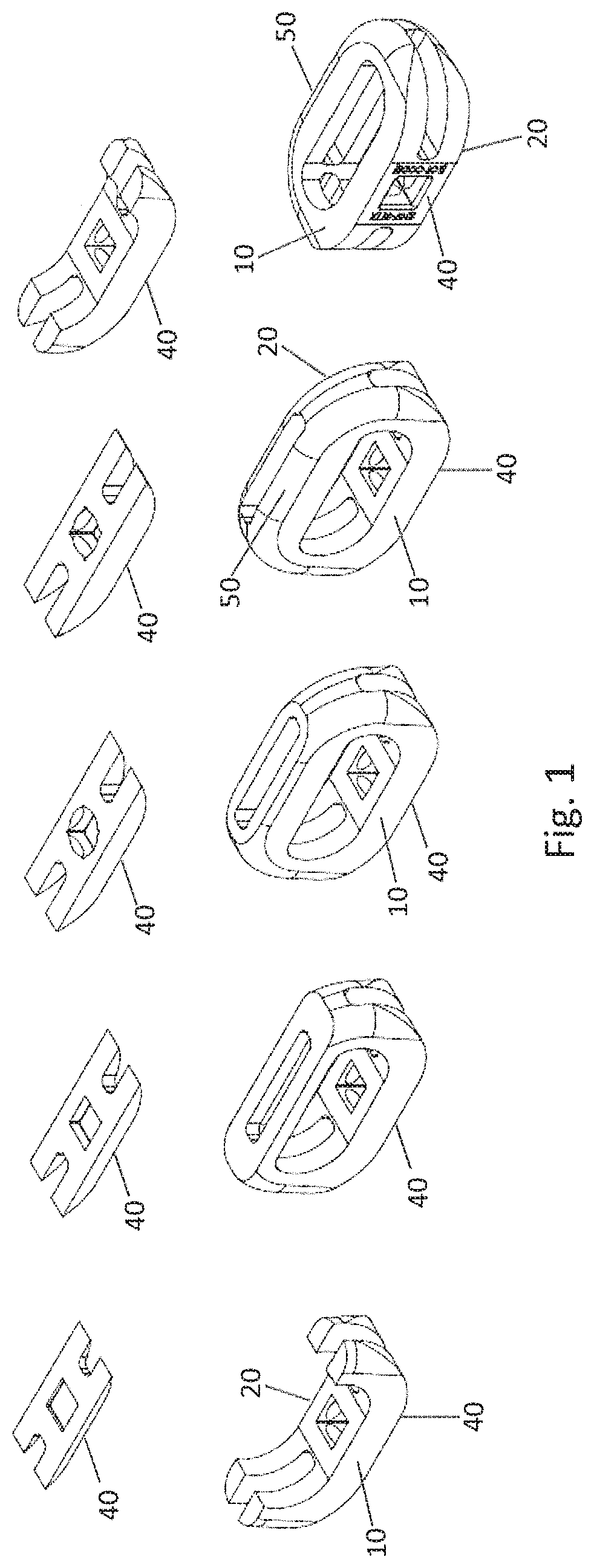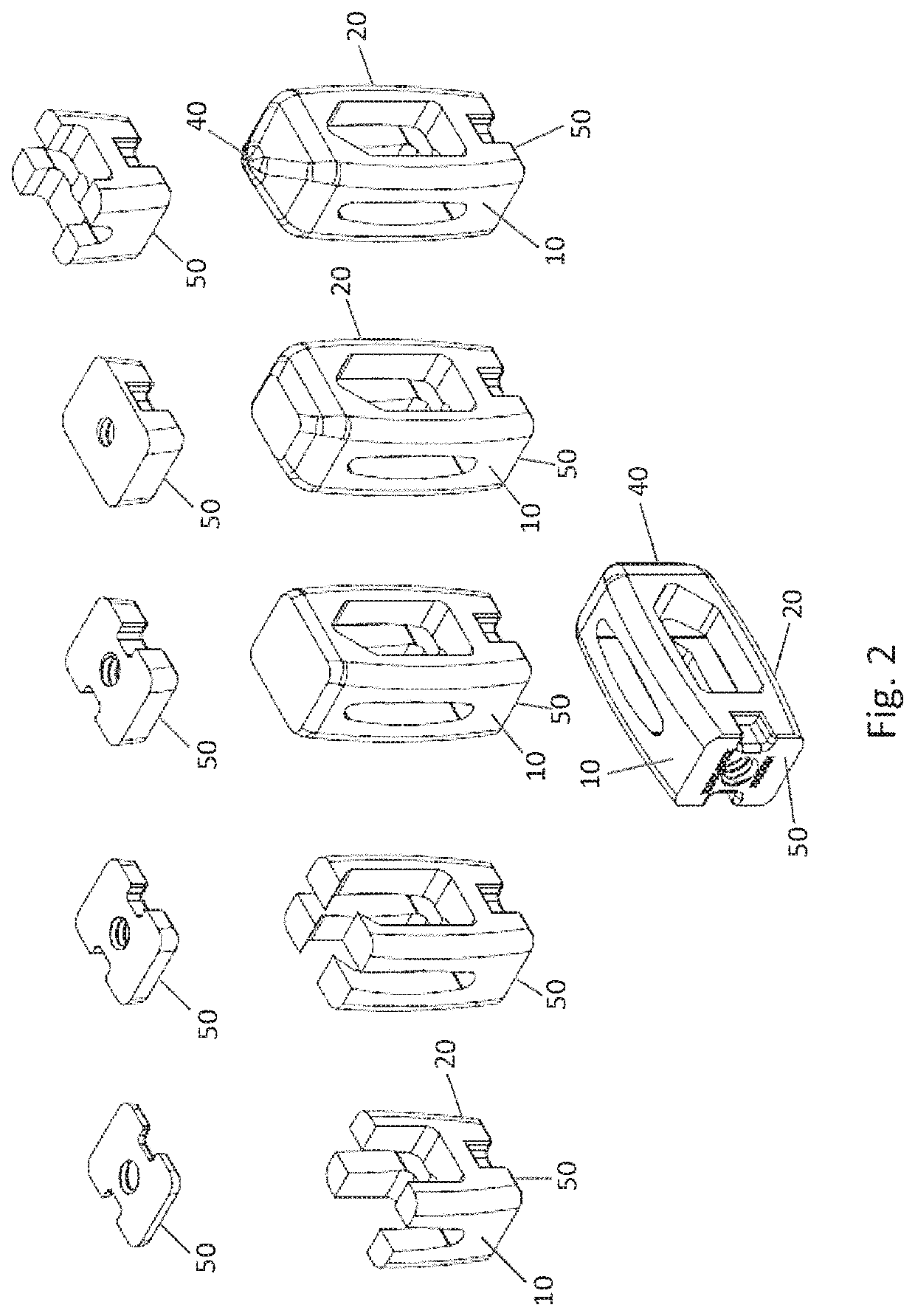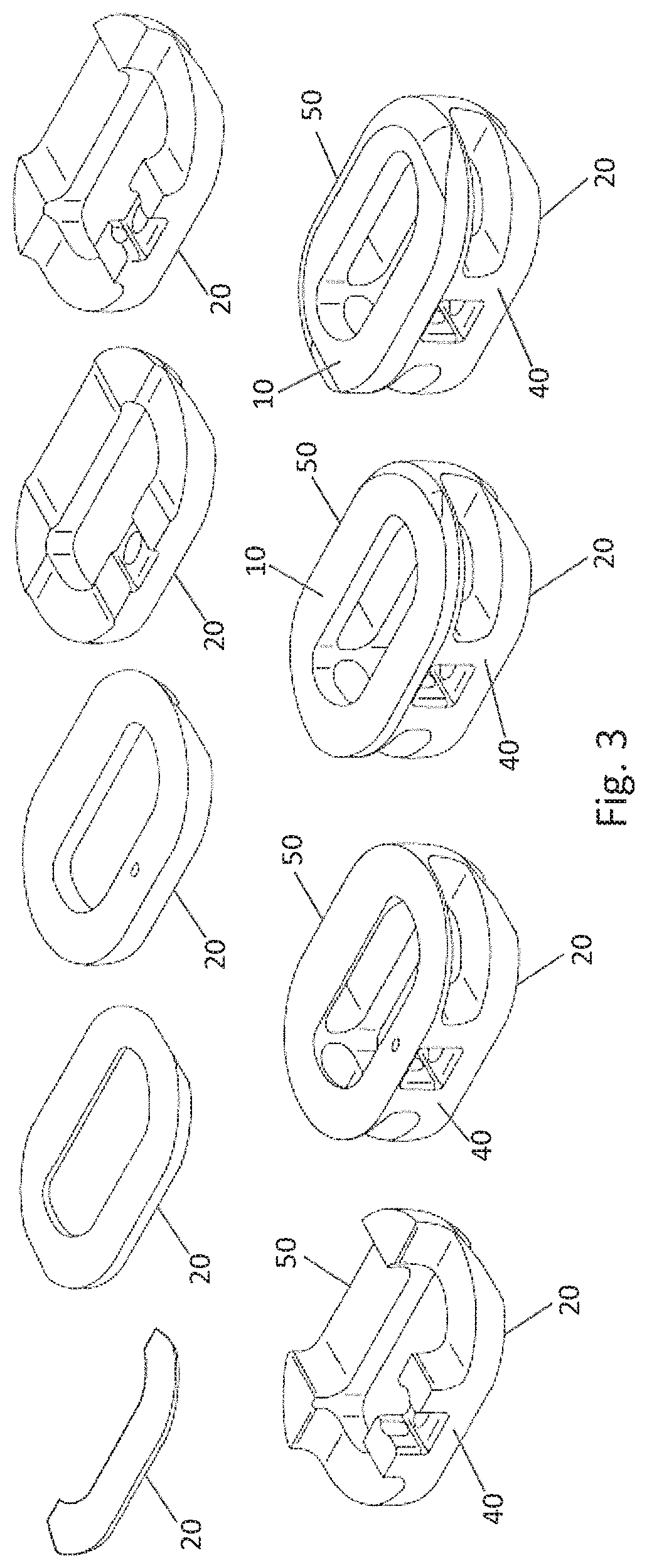Processes for additively manufacturing orthopedic implants
a technology of additive manufacturing and orthopedic implants, which is applied in the field of additive manufacturing orthopedic implants, can solve the problems of external internal surfaces being mechanically eroded, and external surfaces being chemically eroded
- Summary
- Abstract
- Description
- Claims
- Application Information
AI Technical Summary
Benefits of technology
Problems solved by technology
Method used
Image
Examples
example 1
Implant Surfaces Additive and Subtractive Manufacture Process
[0083]A number of test discs of a titanium alloy including 6% aluminum and 4% vanadium were fabricated using either laser sintering or electron beam melting (EBM) by either layering from the bottom surface to the top surface (horizontal) or by layering from the anterior surface to the posterior surface (vertical). For each layer, the titanium alloy particles were deposited, first onto a platform surface of the additive manufacturing device, and then successively onto melt-assembly of each layer. The particles were melted together by laser sintering or EBM. Accordingly, the top surface of a test disc fabricated in a horizontal build direction is parallel to the deposited layers, and the top surface of a test disc fabricated in a vertical build direction is perpendicular to the deposited layers.
[0084]Following additive fabrication, the unrefined test discs were divided into two groups. The first group was further subject to ...
PUM
| Property | Measurement | Unit |
|---|---|---|
| peak-to-valley height | aaaaa | aaaaa |
| peak to valley height | aaaaa | aaaaa |
| peak-to-valley height | aaaaa | aaaaa |
Abstract
Description
Claims
Application Information
 Login to View More
Login to View More - R&D
- Intellectual Property
- Life Sciences
- Materials
- Tech Scout
- Unparalleled Data Quality
- Higher Quality Content
- 60% Fewer Hallucinations
Browse by: Latest US Patents, China's latest patents, Technical Efficacy Thesaurus, Application Domain, Technology Topic, Popular Technical Reports.
© 2025 PatSnap. All rights reserved.Legal|Privacy policy|Modern Slavery Act Transparency Statement|Sitemap|About US| Contact US: help@patsnap.com



